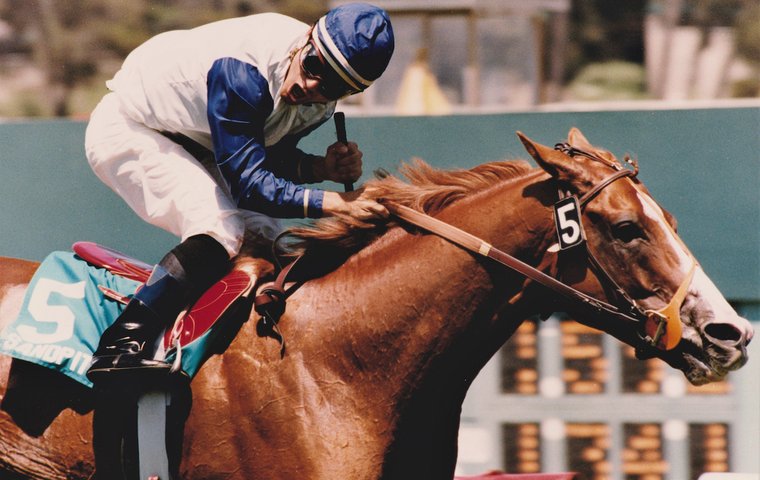
In the latest of his widely acclaimed series, Jay Hovdey recalls the tough and talented Brazilian G1 winner who starred on the Californian turf for Hall of Famer Richard Mandella
He was imported without fanfare in early 1994 to the stables behind the home of Richard and Randi Mandella in the horsey community of Bradbury, just east of Santa Anita Park. When the trainer, away at the time, called home to check on things, Randi informed Richard that the horse named Sandpit had arrived safely from his stay in quarantine.
“Oh? What’s he look like?” the trainer wondered.
“He’s gorgeous,” Randi replied, and then went on to embellish those first impressions. Years later, the conversation remains fresh.
“She went on and on about him,” Mandella said recently. “And the odd thing is, she never said much about our horses. That was maybe the first. Then when I got home, gosh, he was beautiful. After what he turned out to be, I learned to listen.”
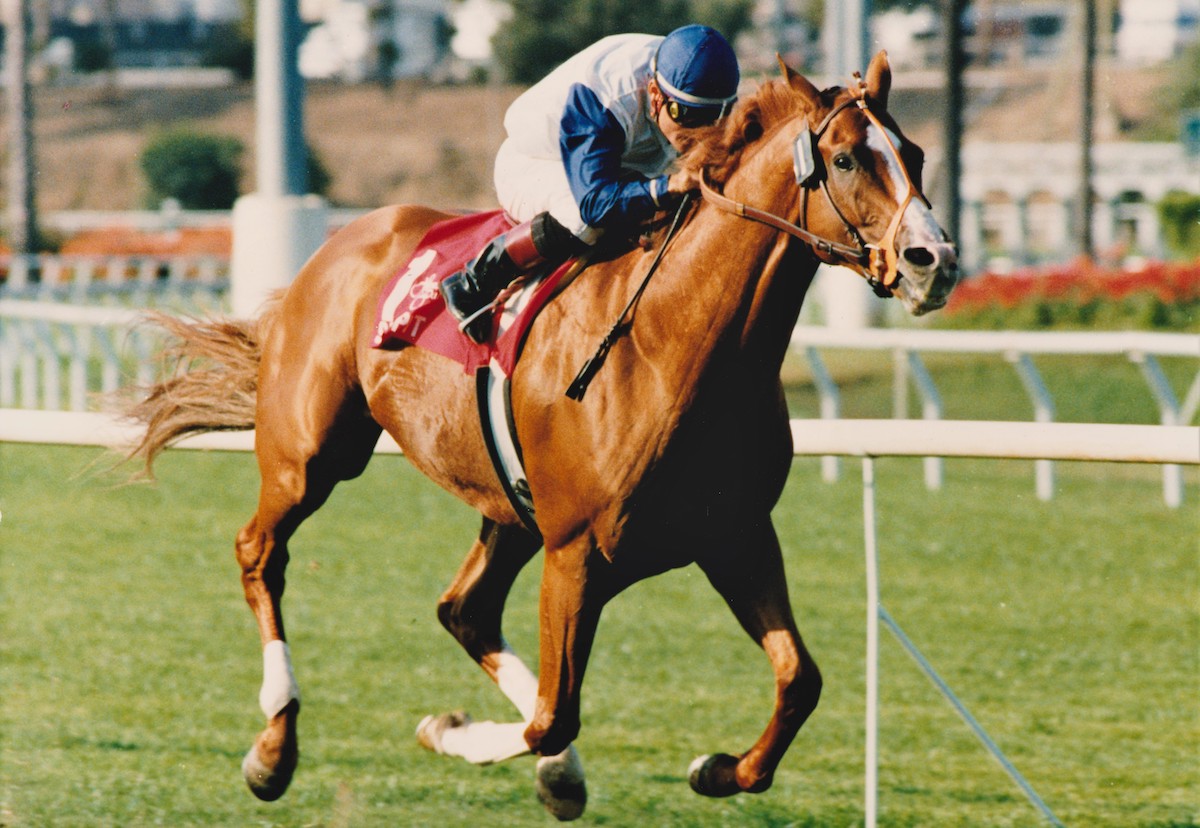 Racing is show business, to a delightful degree, and beauty sells tickets. Sandpit was nothing less than a four-legged Robert Redford, effortlessly handsome. He was one of those caramel chestnuts whose coat continued to lighten over the years in the California sun, while the tip of his tail stayed true to his tawnier youth. White stockings adorned his right-fore and left-hind, and his snowy blaze was so wide it could be seen from the side.
Racing is show business, to a delightful degree, and beauty sells tickets. Sandpit was nothing less than a four-legged Robert Redford, effortlessly handsome. He was one of those caramel chestnuts whose coat continued to lighten over the years in the California sun, while the tip of his tail stayed true to his tawnier youth. White stockings adorned his right-fore and left-hind, and his snowy blaze was so wide it could be seen from the side.
From the moment he first stood in a US winner’s circle during the summer of 1994 at Del Mar, Sandpit drew a crowd. He would pose like a living statue for his admirers and linger for as long as his groom, Ruben Mercado, would allow. Every time the camera would pan his way during a post parade, the announcer could simply have said, “There he is,” and no one would have been confused.
More than just a pretty face
To the delight of the Mandellas, along with what became an army of loyal fans, Sandpit turned out to be more than just a pretty face. Regular visits to the Mandella barn were built around time spent at Sandpit’s stall, an oasis of calm.
But once in action, he turned out to be a ferocious competitor in a sweeping array of North American grass races through parts of four seasons. He became familiar on the international scene as well, and through it all – through 27 starts for Mandella and 20 under jockey Corey Nakatani – Sandpit performed with an integrity that only the noblest of Thoroughbreds come to possess.
At the time of his importation, Sandpit was a well-known quantity in his home country of Brazil. He was bred and owned by businessman Sergio Menezes, who got him from a mating the barely-raced Green Dancer mare Sand Dancer (she was 0-for-1) to the stallion Baynoun, a son of Sassafras.
Green Dancer was a French Classic winner, and so was Sassafras, although so much more. His three-year-old season of 1970 included not only victories in the Prix du Jockey Club and Prix Royal Oak (on a disqualification), but also in the Prix de l’Arc de Triomphe in a titanic confrontation with English Triple Crown winner Nijinsky II, who was undefeated at the time. The margin was a head.
At stud, Sassafras populated Europe and North America with collection of useful offspring. His daughter Glenaris won a Hollywood Oaks, while his son Saros ended up in California, where he sired the Kentucky Oaks winner Fran’s Valentine and a host of local stakes performers.
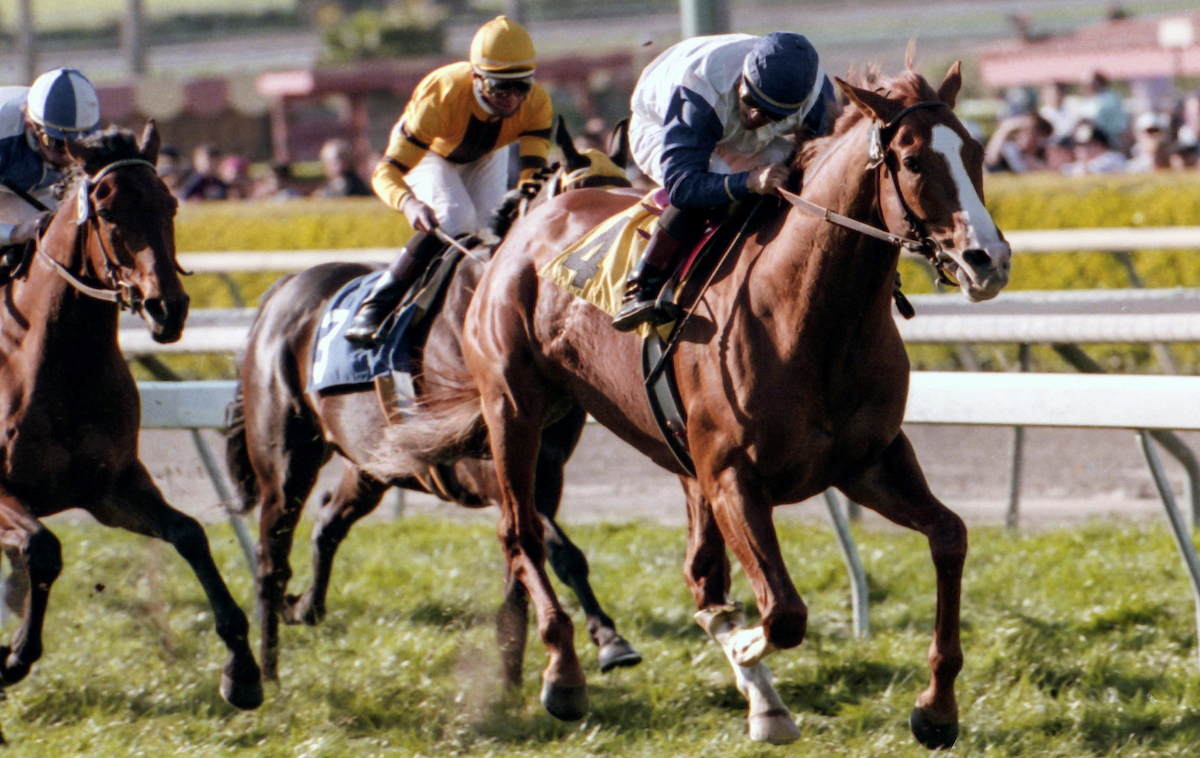 The best of the Sassafras colts turned out to be the long-winded Baynoun, who raced for the Aga Khan. Baynoun was among the better British three-year-olds of 1984 when he won the Geoffrey Freer Stakes at 13 furlongs and the Queen’s Vase at two miles. His finest hour came in the St Leger that fall at Doncaster, when Lester Piggott had to play every card in his deck aboard Commanche Run to edge Steve Cauthen and Baynoun at the slam-bang finish of the mile and three-quarters.
The best of the Sassafras colts turned out to be the long-winded Baynoun, who raced for the Aga Khan. Baynoun was among the better British three-year-olds of 1984 when he won the Geoffrey Freer Stakes at 13 furlongs and the Queen’s Vase at two miles. His finest hour came in the St Leger that fall at Doncaster, when Lester Piggott had to play every card in his deck aboard Commanche Run to edge Steve Cauthen and Baynoun at the slam-bang finish of the mile and three-quarters.
Baynoun ended up standing in Brazil, where Sandpit hit the ground in October of 1989 as a member of his sire’s second crop. He won G1 races at three and four, always over a distance of ground, and concluded his early career in late 1993 with a respectable fourth in Argentina’s Gran Premio Carlos Pellegrini, the Breeders’ Cup Classic of South America.
At that point, Menezes reached out to Richard Mandella, who at the time was still aglow from his 1993 Horse of the Year campaign with Kotashaan and two-year-old filly title with Phone Chatter, both victorious in Breeders’ Cup events at Santa Anita.
‘I wasn’t quite sure what to expect’
“I guess that’s probably how I came to his attention,” Mandella said. “To that point, however, I didn’t have any experience with horses from Brazil, so I wasn’t quite sure what to expect from Sandpit.”
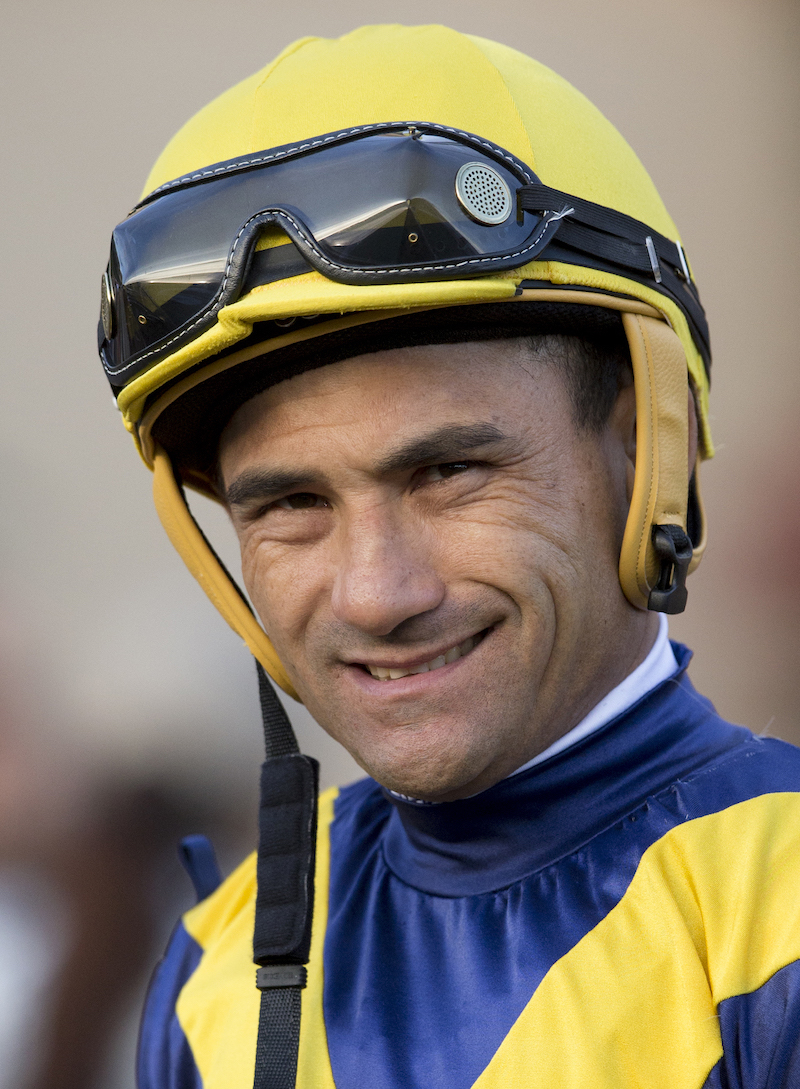 It did not take long for expectations to rise. Corey Nakatani, a go-to rider for many of Mandella’s best grass runners, was in on the ground floor.
It did not take long for expectations to rise. Corey Nakatani, a go-to rider for many of Mandella’s best grass runners, was in on the ground floor.
“I remember working him a lot, including seven-eighths and out a mile just before he ran,” said Nakatani, who was forced into retirement because of upper spinal injuries suffered in 2018. “I was very high on him just sitting on him in the morning. I remember telling my agent, Bob Meldahl, that this could be the best grass horse in the country and to stick with him.”
Mandella was in no hurry. Sandpit did not break cover until August of 1994 with a runner-up finish in an allowance a race at Del Mar and then a victory in a small stakes there. By the time the Oak Tree meeting at Santa Anita rolled around, Sandpit was fully exposed a turf horse of considerable flair, as he displayed in winning the Oak Tree Invitational, a G1 mile and a half at the time.
There followed a debate that hung over Sandpit’s reputation throughout his career. Still in its relative infancy, the Breeders’ Cup was encouraging stallion nominations and early foal nominations by levying punitive costs to buy into the races late.
Neither Sandpit nor Baynoun had been made eligible through Breeders’ Cup outreach to Brazilian breeders, such as it was. Having just won the Oak Tree Invitational, Sandpit’s growing celebrity would have added sparkle to the field for the $2 million Breeders’ Cup Turf to be run that year at Churchill Downs.
However, it would have cost Menezes $400,000 to enter and start, a gamble that Mandella was not willing to endorse. “Spending $400,000 for a chance to win $950,000 is a bad bet from any angle,” Mandella said at the time.
And so, instead of going to Kentucky, they took Sandpit to Tokyo for the Japan Cup. Mandella had been there the year before with Kotashaan and would have won the race had jockey Kent Desormeaux not misjudged the finish line. Sandpit ran nearly as well to finish an admirable fifth after breaking clear of the field down the long backstraight and then getting pinched deep in the stretch. He was beaten about four lengths by Marvelous Crown.
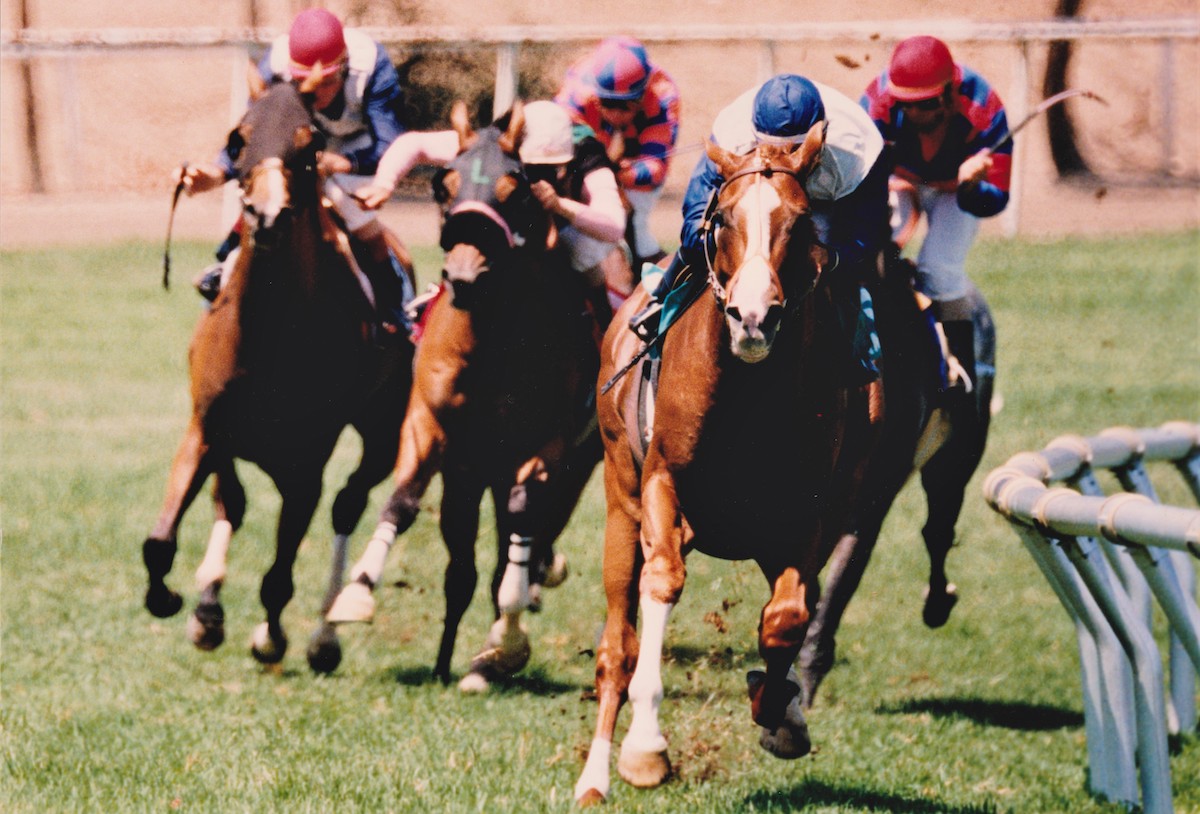 No matter. The 1995 season stretched out ahead, and Sandpit was poised to take full advantage of a North American grass racing landscape brimming with rich opportunities. After an allowance race warm-up, Sandpit ran once a month for seven months, competing in the east, west, and midwest.
No matter. The 1995 season stretched out ahead, and Sandpit was poised to take full advantage of a North American grass racing landscape brimming with rich opportunities. After an allowance race warm-up, Sandpit ran once a month for seven months, competing in the east, west, and midwest.
‘I wanted to kick myself in the head’
Six of the events were G1 and the other G2. He won the San Luis Rey Stakes at Santa Anita, the Caesars International Handicap at Atlantic City, and the Caesars Palace Turf Championship at Hollywood Park. He was also second that summer in the Arlington Million at Arlington Park, beaten two lengths by Awad, and much to the frustration of Nakatani, who found himself boxed in at a point where he would usually set Sandpit free.
“I did everything I could to get him in a position to get out,” Nakatani recalled. “I could have forced my way out at the five-eighths pole, but I don’t ride like that. The others waited and waited, and when they all started to quicken like they did, the hole just didn’t develop the way I thought it would.
“I wanted to kick myself in the head over that ride, because I knew how good he was and how good he was doing. All my other rides on him were pretty damn good.”
Despite the results of the Million, and a subsequent second to Northern Spur in defense of his title in the Oak Tree Invitational, Sandpit still was considered the top contender for championship honors – as long as he showed up to contest the Breeders’ Cup. But the $400,000 price tag had not changed, and so it was off to Japan again, where this time he finished a perplexing eighth behind the German horse Lando.
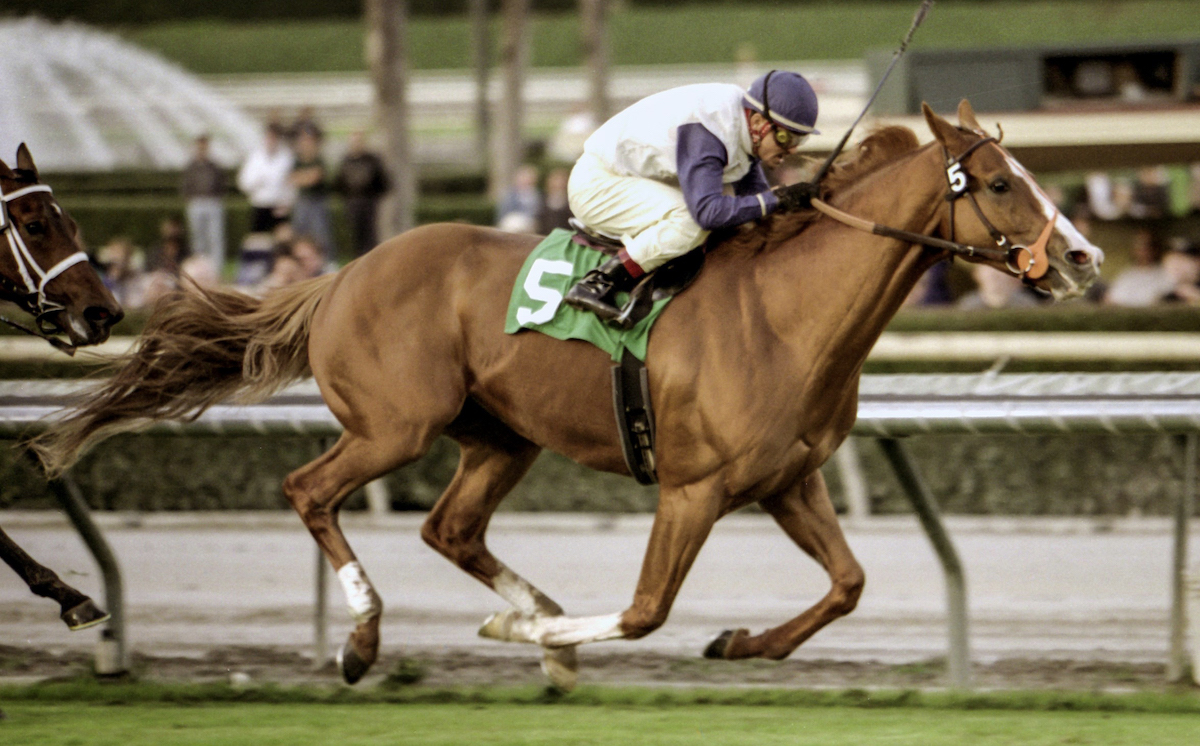 “Sandpit was a very sound horse,” Mandella said. “But I’m not very smart, so it took me a couple of races in Japan to realize he did have a little bit of a breathing problem. It showed up in Japan when they have to make that uphill run coming through the stretch. He’d make a noise he never made on a level track. Turned out he had a lazy left (epiglottal) flap that would open up only about 50% on one side of his throat. The right one opened all the way, though. And the way he ran over here I never even thought about it.”
“Sandpit was a very sound horse,” Mandella said. “But I’m not very smart, so it took me a couple of races in Japan to realize he did have a little bit of a breathing problem. It showed up in Japan when they have to make that uphill run coming through the stretch. He’d make a noise he never made on a level track. Turned out he had a lazy left (epiglottal) flap that would open up only about 50% on one side of his throat. The right one opened all the way, though. And the way he ran over here I never even thought about it.”
Nakatani had the presence to ride Sandpit gently through the final stages of their second Japan Cup, after which Mandella gave his star several months of rest. By the late spring of 1996, the now seven-year-old Sandpit was back in top form to win the Hollywood Turf Handicap – defeating both Northern Spur and Awad – and then defend his crown in the Caesars International at Atlantic City. A third-place finish in the Arlington Million convinced Mandella that his aging star needed another break, even though rich races back in California could have been at his mercy.
‘We could take him places and he’d show up’
“Being a horse with such a sweet disposition, we could take him places and he’d show up,” Mandella said. “But if you want to run them for a length of time, they all need a break. And we stretched that length pretty good with him.”
As the 1997 season dawned, those of us who had fallen under Sandpit’s spell were overjoyed to hear he would tackle one more campaign. It began with a coolly efficient score in the San Marcos Handicap on Jan. 20.
“Sergio kept asking me along the way, ‘When are we going to try him on the dirt?’” Mandella said. “I’d say, ‘So, Sergio, which one of these big grass races do you want to pass?’ When he was eight we finally tried, and he didn’t do too bad.”
Not bad at all. In his dirt debut, Sandpit finished second to Mandella stablemate and fellow Brazilian Siphon in the Santa Anita Handicap. The encouraging result prompted Mandella to send Sandpit with Siphon to the UAE for the second running of the Dubai World Cup. Torrential rains delayed the race for five days, and then it took a career-best race from Sheikh Mohammed’s globetrotting turf star Singspiel to defeat the Mandella duo, as Siphon ran second and Sandpit third.
Sandpit closed out the season with another second in the Arlington Million and a couple of desultory turf appearances back home in California. He was still showing the flag, and his followers remained loyal. But Mandella knew the time had come to turn the page.
Durable blue-collar earners
Sandpit was retired at the end of 1997 with 14 wins and 17 placings in 40 starts. Standing at the Vinery, in Kentucky, the best of his sons and daughters turned out to be durable blue-collar earners with long careers. He spent a few years shuttling to Australia, then was moved to Spendthrift Farm for the 2004 breeding season. It was there he fell ill with a liver ailment traced to a malignant tumor.
Sandpit died on Sept. 4, 1997, and was buried at Spendthrift alongside such watershed Thoroughbreds as Nashua, Majestic Prince, Gallant Man, Raise A Native and Exclusive Native.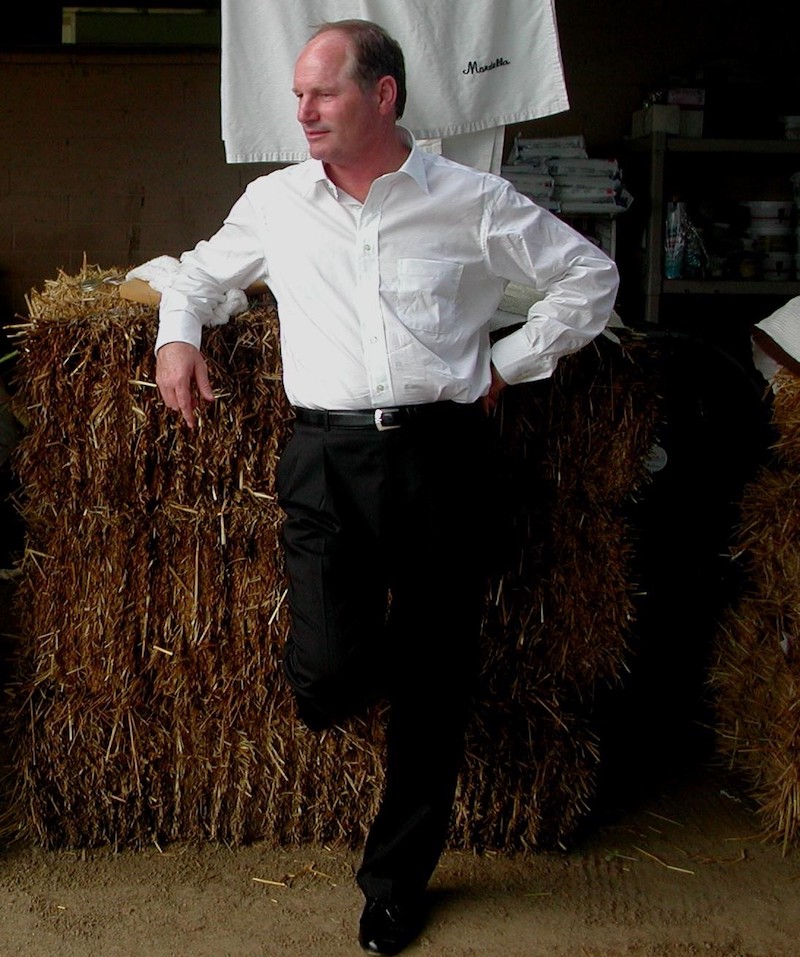
The Sandpit era marked Mandella’s coming out as an elite trainer of certain Hall of Fame stature. His stable overflowed with brilliant mares and relentless older males, typified by the running of the 1997 Hollywood Gold Cup, in which he saddled five of the six runners (Sandpit was third to stablemates Gentlemen and Siphon.)
Still, Sandpit always clings to a soft spot in the trainer’s heart, made everlasting by an incident that took place at Arlington Park during their third swing at the Arlington Million.
“I had just saddled him for the race,” Mandella recalled. “Not far away, there was a father and what looked to be his son standing just outside the paddock. The father got my attention and motioned me over.
“I saw no reason not to,” he continued. “Then I noticed that his son was blind. The father had a request. He asked me if would be okay if his son could touch Sandpit. He said his son was a big fan of the horse and had been for a while.”
Mandella’s first reaction was to be protective of his horse. Then he remembered the horse was Sandpit. “He was like a big, stuffed toy,” Mandella said.
“I figured he was so nice, it wouldn’t matter. So I had Ruben lead him over to the paddock fence. The boy reached out and touched him, touched Sandpit. And you know what? I swear his eyes just lit up. It was a pretty special moment.”
• Read all Jay Hovdey's features in his Favorite Racehorses series
What They're Thinking: Laffit Pincay Jr – I could always count on Affirmed
Nancy Sexton: ho’s the daddy? Top ten greatest sires of the last 100 years (part two)
Nancy Sexton: Who’s the daddy? Top ten greatest sires of the last 100 years (part one)
View the latest TRC Global Rankings for horses / jockeys / trainers / sires


